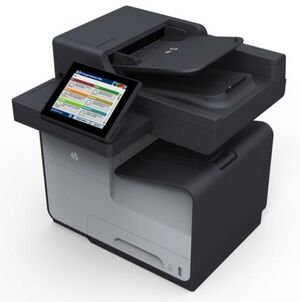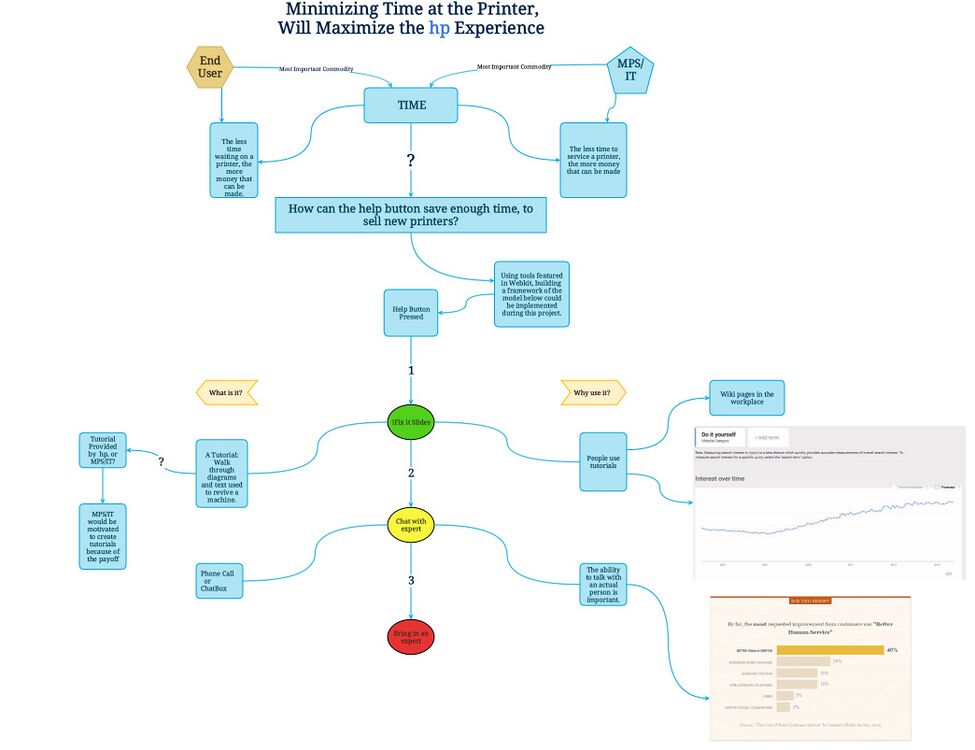|
|
|
|
| HP Printer
|
| Sponsors
|
|
| Team Name
|
Print Response Team
|
| Duration
|
Fall 2015 - Winter 2016
|
| Faculty Advisers
|
|
| Students
|
- Cody Helbling
- Arthur Putnam
- Gavin Quinn
|
- The Fleet Service Responder entails designing and developing an application that provides service acknowledgement for discovered issues for HP printers. This application will assist the user by getting an immediate response from a technician, and will provide value to a business by improving client relations and providing quick recovery of a failed system.
- Modern enterprise level HP printers are equipped with large, touch screen interfaces and impressive computing power. These features create an opportunity for printers to run more complex applications than ever before. With these new abilities, HP is creating applications that save their customers time and money.
- HP is also tailoring products to make them easier to manage and configure. HP regularly works with Managed Print Services (MPS) to create a better environment and improve functionality for the average end-user. An MPS controls the customer relations and standard troubleshooting of everyday printer issues, and is a vital part of the HP experience.
- The 'help application' is not only meant to assist an MPS with printer control and troubleshooting, but also the end-user as well. Our goal is to not only improve the relations a customer has with their MPS, but also increase the efficiency of the entire printer troubleshooting process.
- A network-enabled printer running the custom application
- A custom server that can handle the printer requests and communicate back to the user
- Accurate documentation that can be provided to HP.
1. Printer Application Specs.
- Targeted for printer model Color LaserJet Enterprise Flow MFP M577
- Application will exist natively on the printer, only reaching out to the server when needed
- Allow user troubleshooting
2. IT/MPS Application Specs
- The MPS or IT Service must be able to receive the appropriate information from a defective unit and provide a timely response
- Allow IT/MPS to provide help documentation
3. Intranet Printer Communication Specs
- Application must support printer-to-printer communications
- Develop a map or database interface to keep track of printer locations
Managed Print Service Server[edit | edit source]
- The Managed Print Service Server (MPSS) is a web interface that technicians can use to manage printers. Technicians can login to respond to help requests, view printer details, chats with printer users and schedule repairs. All of the information is gathered through the REST web API commands in the Help Application. This allows managed print systems to implement their own MPSS or plug it into an existing system. By providing this feature, the application has a large amount of scalability and flexibility.
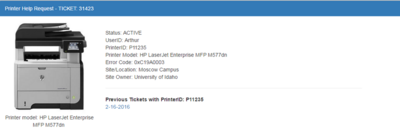
View of a ticket in the Managed Print Service interface.
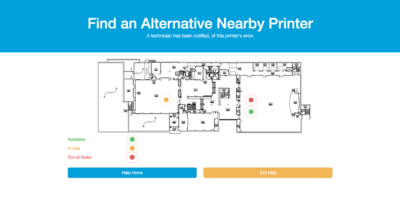 By utilizing network communications, the user can send their print job to a nearby printer straight from the application. |
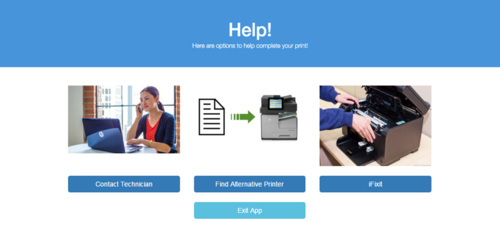 The main menu of the applications, with selections to contact a technician, find a nearby printer, or be given a guide for the users to resolve the issue themselves. |
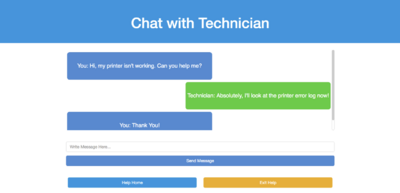 Through the chat interface, a user never needs to walk back to their desk just to get in touch with a technician. |
- Printer Application
- Java 8
- Java Spark Framework
- Jetty Server
- Bootstrap 3
- HTML4/CSS/JavaScript
- Jade Template Language
- AJAX
- IntelliJ
- MPS Application
- Python
- Django Web Framework
- HTML/CSS/JavaScript
- Bootstrap
- “We focused our project around the three areas of project learning and used design thinking to build our solution with the user in mind.”
- - Print Response Team
- Surveyed users to determine key focus points.
- Conducted usability tests to make the user interface easier to use.
- Research revealed there is no product on the market to communicate directly to a technician through a printer.
- Used previously gathered information to influence product development.
- Created interactive prototypes for quick feedback from stakeholders.
- Used current technologies to build the product.
- Fall 2015
- Design and Layout
- Deliverable for each sprint
- High level view of quality
- Code repository
- Manage Defects
- Gantt Chart for dependencies
- Confirm environment setup
- Spring 2015
- Implementation of design
- Final packaging of code
- Approval from client

A high-level view of the sprint plan for the spring semester.
| Picture
|
Name
|
Major
|
|
|
Cody Helbling
|
CS
|
|
|
Arthur Putnam
|
CS
|
|
|
Gavin Quinn
|
CS
|
Fleet_Power_Point
Sprint Review
EXPO Board
Mid-Spring Sprint Report
